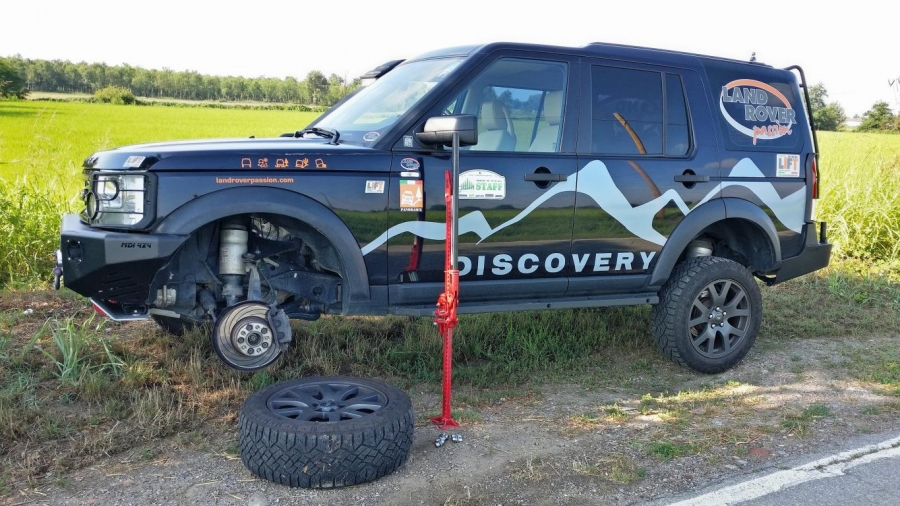High lift jacks may become a dangerous device if you do not use it with paying attention. The more you lift something, the less stable it is. Combine this with (usually) non-uniform terrain, you have a recipe for danger. Still, with careful use, High Lift Jack can be your best friend.
There are many uses for high lift jacks, such as winches, clamps, spreading, pulling stubs and fence posts. However, in this article, I will only describe the basics of raising and lowering the vehicle. Here's how to run the job safely:
Lift the load
If possible, park your car on dry level ground. Odds are not impossible as you probably will be stuck in a somewhere wilderness. You will lift a roll chock against your wheels at the opposite end.
This is to minimize the possibility of a rollback. Roll chock? See if there are some useful rocks and logs to help. Make sure there is no damage to the jack or fragments that the ratchet mechanism can hold the slide or notch in place. (Ideally, this work needs to be done in advance).
I know your lift point. You can not put car jack under your body panel and expect to take weight without rubbing. Lift points are specified for many off-road vehicles. A rugged steel bumper is also a good choice. Please plant the jack base plate on a firm surface and level as much as possible.
You may need to remove debris and use a board or offload base attachment. Lift the inversion latch (the curved handle of the slide mechanism) and it clicks in the upper position. Pull the handle down and separate it from the steel bar until the handle clip spring is released.
If the load is not supported, there should be no tension on the steering wheel. Using either the handle or the handle socket, slide the ratchet mechanism over the beam and pull out the large runner until it is tight against the lift point. The area around the vehicle, make sure that all of the people, and what you can get in your way are clear.
Grasp the handle with both hands and pull it carefully. Always, you need to keep your upper body away from the gap formed between the handle and the beam. With each down stroke, the vehicle raises one notch. Since Jack supports the load, the handle receives tension.
Always maintain a tight grip. When you release the handle, it quickly and powerfully returns to the upright attitude. Please pump up and down to further raise the car. Always keep an eye on jacks and vehicles.
Let's start with either lean or shift, stop to lift and try to stabilize them. If this can not be done, we recommend lowering the vehicle and relocating and redoing. If you have a vehicle at the desired height, carefully return the handle to the upright position. Secure it in place against the beam with the handle clip.
We recommend that you transfer the load to the block or jack stand before trying a repair. Place them where you want them and get them as close as possible to touch support points. Push the reverse latch down to the lower position.
Take the handle again with both hands and slowly lower the vehicle with a pump up and down. When the weight moves from jack to support, the slider drops to the lower right. This is perfectly normal and occurs when the load drops below 150 pounds.
Reduction of load
Before you start lowering your car, you clear the nearby people or shards of vehicles. If you have it in a block or jack, please follow the instructions above to lift the vehicle until the first weight is back in jack. After confirming that Jack is safely holding the load, remove the block or jack. With the handle fixed to the, I beam, push down the reversing lever down to the down position. Grasp the handle with both hands. Carefully start pumping the handle up and down. On the contrary to lifting, when lowering the car, the ratchet goes down the notch of each upstroke. Please pump until the vehicle touches the ground. As mentioned earlier, if the load is less than 150 pounds, the slider automatically returns to the bottom of the beam.








